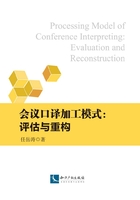
Chapter One Introduction
1.1 A Booming Industry
Interpretation and translation is one of the most rapidly-developing professions today. According to the China Foreign Language Administration, in 2015 there were 55,975 enterprises providing language services in China,5,287 of which described translation and interpreting as their main services. According to IBISWorld, a market research company, translation and interpreting was a $33.5 billion industry in 2012, and is expected to grow to $37 billion by 2018. The U. S. Bureau of Labor Statistics(2012)has predicted a 46% growth in employment in the field by 2022, a conspicuously higher growth rate than in any other occupation.
In recent decades, China has become increasingly prominent on the global stage, in a wide range of areas: for example, Beijing hosted the 2008 Olympic Games, the 2010 World Expo was held in Shanghai, Chinese writer Mo Yan won the Nobel Prize in Literature in 2012, Chinese medical scientist Tu Youyou won the Nobel Prize in Physiology or Medicine 2015, and Beijing has been awarded the 2022 Winter Olympic Games. Over the past decade, China has expanded its horizons to include the world, and the world has undergone a period of reciprocal reformation and reconstruction. In the United States, for example, the Obama administration has proposed“pivoting”America's foreign affairs to focus on Asia, while Chinese President Xi Jinping has proposed a“new type of major power relationship”with the U. S. Accordingly, contacts and exchanges between the West and the East have increased exponentially, as has the demand for interpreters and translators. China's emergence as the world's second-largest economic power has also highlighted the growing need for accurate communications, with interpretation and translation being at the center of this process.
The most-advanced type of interpreting, conference interpreting, was first introduced at the 1919 Paris Peace Conference. It is a demanding and exacting profession, as the messages to be interpreted in a conference setting can be professional, encyclopedic, sophisticated or profound in nature. Conference interpreters not only pass messages, they also coordinate communication among participants, act as cultural consultants, and are participants in the communication itself. They must be able to listen, comprehend, memorize and transmit at almost the same time, often in the heat of debate.
Conference interpreting research(CIR)first began in the West in the 1930s;over the next eighty years CIR went through four developmental phases, and has nowbecome an independent discipline, albeit one that overlaps with many other subjects. In China CIR is a truly new discipline, having only begun in the mid-1990s. While CIR researchers use various models to represent their studies, the processing model is the most prevalent in China's CIR community, as it reflects the nature of interpreting and is often applied to interpreter training.